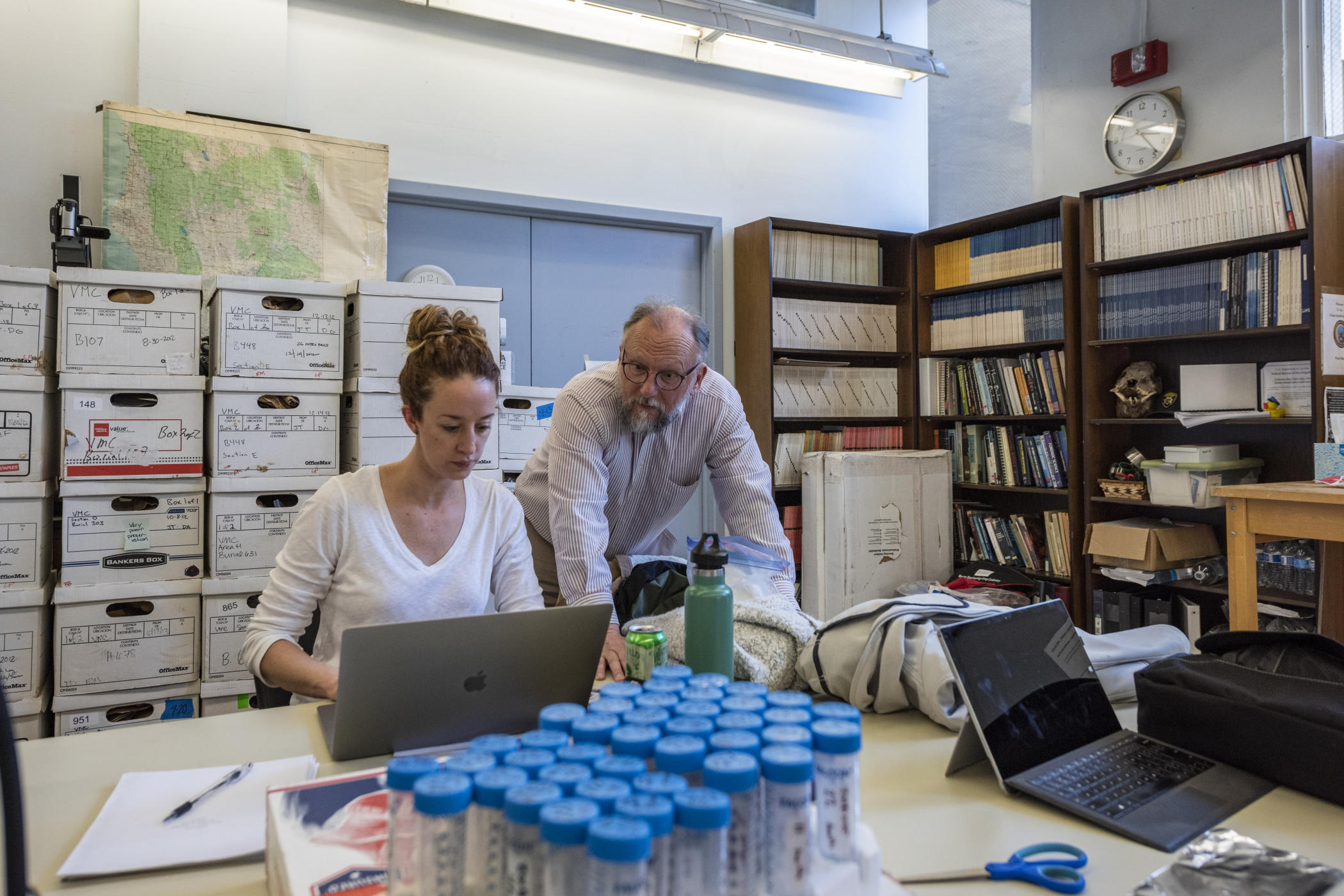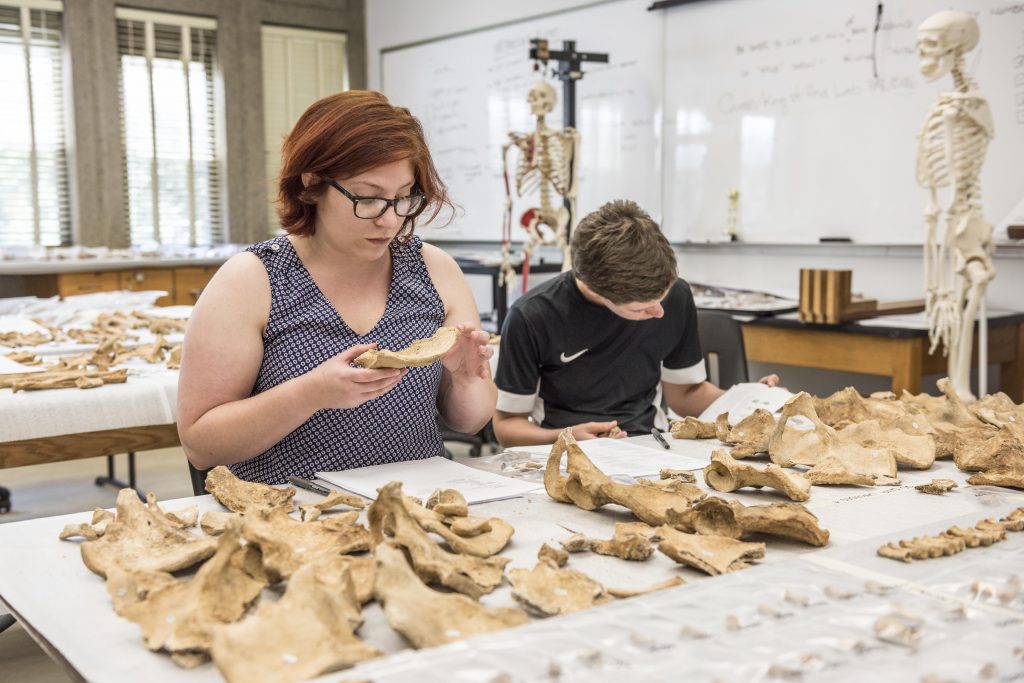Finding Answers Through Forensics

Faculty Ashley Kendell (left) and P. Willey (right) work in the Anthropology Department Human Identification Laboratory. Now a half-century old, the facility is in desperate need of upgrades that cannot be achieved through renovation.
For nearly 50 years, the Chico State Human Identification Laboratory (HIL) has been serving Northern California and beyond. As part of the College of Behavioral and Social Sciences, it partners with more than 60 state and federal agencies to recover missing persons, analyze and identify their bodies, present vital information to resolve criminal cases, and provide closure to families.
The HIL’s faculty members represent half of the board-certified forensic anthropologists in the state of California and operate the most experienced forensic lab west of Texas. Their unique expertise provides:
- Search and recovery fieldwork of outdoor scenes, including sites of major disasters such as wildfires.
- Laboratory analysis of skeletal remains. Staff identify age, sex, ancestry, and stature of unidentified remains, and analyze trauma and cause of death.
- Outreach and training to law enforcement agencies, including the FBI.
- In 2017, staff who are also certified Peace Officer Standards and Training instructors offered 12 homicide courses. They also offer trainings on excavation methods, human remains recovery, and bone identification.
- Consultation on national and international cases as well as an active role in discussions on laboratory accreditation and best practices.

Not counting the Camp Fire, in 2018, the HIL managed 120 cases, including 20 recoveries, and spent 37 days in the field. The load has sharply increased, from 100 cases in 2017 and the 72 cases the previous year.
“It grows exponentially every year,” said HIL faculty member Colleen Milligan.
“Crossing the 100-case threshold was a big moment for our lab. One hundred meant for the first time we didn’t have any time period where we didn’t have multiple cases on the floor.”
She and other faculty are hoping, with support from a capital fundraising campaign, to build a state-of-the-art facility dedicated to the HIL that can match caseload volume with the advanced technical expertise necessary to operate it.
When the lab was founded by Professor Emeritus Turhon Murad in 1972, forensic anthropology was just beginning to be seen as its own science. Today, the HIL is operated by four full-time faculty and one staff member, 15 graduate students, and 12 undergraduates who are awarded access through a competitive internship process each semester.

Because of its advanced expertise, the lab handles some of the more difficult cases in the state, providing services at minimal or no charge. They assist on everything from unintended deaths to homicides, as well as archaeological and historical cases.
The HIL’s most famous cases include investigating the death of Polly Klaas, a 12–year-old girl who was kidnapped from her Northern California home in 1993. They also assisted on the San Bruno pipeline explosion in 2010 and the 2014 Interstate 5 bus crash in which 10 high school students were killed, along with their driver and a truck driver.
Also, inevitably, as California’s landscape and climate have continued changing, the HIL is responding to an increasing number of wildfire-related deaths, including the 2018 Mendocino Complex Fire, Redding’s Carr Fire, and the Camp Fire.


